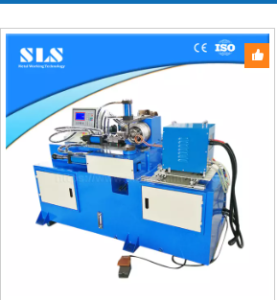Selecting the best tube pipe bender for your needs requires a comparison of various types and their capabilities. From manual benders to advanced mandrel models, each has its own set of features suitable for specific applications.
Types of Tube Pipe Benders
Manual Tube Benders
Simple and cost-effective, manual tube benders are ideal for small projects or occasional bending needs.
- Cost: Lower upfront investment compared to more advanced benders.
- Operation: Best for thin-walled tubing and softer materials.
Hydraulic Tube Benders
Powerful and reliable, hydraulic benders are suitable for heavier-duty bending tasks.
- Power: Greater force for bending thick-walled and rigid tubes.
- Efficiency: Faster than manual benders, making them suitable for medium-scale operations.
CNC Tube Benders
Offering the highest precision and automation, CNC benders are the best for complex and high-volume bending.
- Precision: Programmed for complex bends with exact specifications.
- Speed: High production rates with minimal manual intervention.
Rotary Draw Benders
Excellent for precise bends, especially when consistency and tight radii are required.
- Accuracy: Good control over the bending process, ensuring a high-quality finish.
- Versatility: Suitable for a variety of materials and bend angles.
Mandrel Tube Benders
Mandrel benders provide the highest quality bends, reducing the risk of pipe deformation, especially in thin-walled tubes.
- Quality: Inserts a mandrel into the tube to support the pipe walls during bending.
- Finish: Produces a smooth and wrinkle-free finish, which is essential in visible or aerospace-grade components.
Choosing the Right Bender
Project Requirements
- Volume: Assess the volume of work to determine whether manual, hydraulic, or CNC benders are more cost-effective.
- Material: Consider the type of material you are bending. Some materials may require the support of a mandrel tube bender to prevent kinking.
Technical Specifications
- Power Consumption: Match the bender's power requirement with your workshop's capacity.
- Bending Capacity: Ensure the bender can handle the diameter and wall thickness of the tubes you work with.
- Accuracy: Precision in bending angles can be crucial for the fit and function of the final product.
Cost Efficiency
- Initial Cost vs. Operating Cost: Weigh the initial investment against the long-term operating costs including labor, power usage, and maintenance.
- Lifespan: Higher-quality benders may have a higher price tag but can offer better durability and longevity, reducing replacement costs.
Conclusion
The best tube pipe bender for your needs hinges on the specific requirements of your projects, including the type of materials you're working with, the production volume, and the precision needed. Manual and hydraulic benders can suffice for simpler tasks, while CNC and mandrel benders offer the high-quality finishes required in specialized applications. Evaluating your needs against the capabilities of each bender type will guide you to the right investment.
